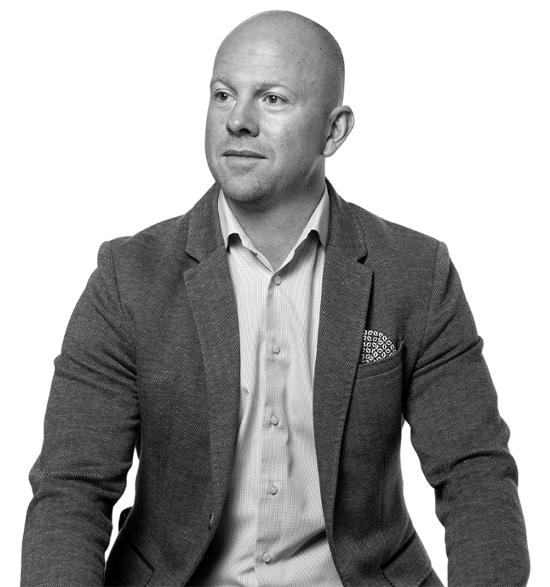Is Unconscious Bias a Hidden Adversary Within Your Business?
Jessica Doyle
6th October 2021
- 8 min read

Did you know that it’s common for identical twins to become less and less physically similar as they age? The science behind this is that although identical twins may share the same DNA, we are all unique products of our environment and experiences as much as we are our genetics.
Just as what we’ve done, where we’ve been and how we’ve lived influence our appearance and personality, it’s our collections of unique experiences, circumstances and environments that shape our unconscious biases. However we may perceive ourselves, our thought processes, convictions and ethics, none of us are in control of how our unconscious minds organise the world into categories we aren’t even really aware of.
This goes some way in explaining why research has found that about 1 out of 3 leaders tends to overestimate their own level of inclusion, believing that they are more inclusive than those around them. Despite the fact that post-pandemic in many ways we’re living in a more self-aware, open-minded world of work, we’re still human. This is why unconscious bias is a hidden adversary so many businesses face, and one we as people will always have to pay attention to.
First, what is unconscious bias?
It is the part of our subconscious minds that influences how we think, make decisions and behave towards other people. Whether we like it or not, we all hold prejudices and preferences, often excused as a “gut feeling” or “instinct”.
Unconscious bias is the reason that even when people claim not to hold prejudices, in a situation where they need to make decisions under pressure, their unconscious bias will be unveiled- usually unbeknownst to them.
We most often think of unconscious bias as relating to age, gender, race or ethnicity. And it can do. For example, when assigning a project that may involve overnight travel, you may subconsciously discount a female employee who once had to prioritise a family commitment ahead of work, even though planned trips away wouldn’t be an issue for her.
However, biases extend beyond these areas in ways we are often not even fleetingly aware of:
Affinity bias means we favour people who are like us, who share our background and experiences. The natural consequence of this is discrimination against people who *aren’t* like us, causing us to conflate a lack of common ground with a lack of competency or qualification.
Negativity bias names the habit so many of us have: to remember the bad and forget the good. For example, we can easily fall into negativity bias with colleagues by focusing on the one missed quarter, over the many quarters where they exceeded their goal. This also hinders the hiring process when one small thing we don’t like in a job candidate is allowed to negate all other positive attributes.
Attribution bias is the definition of Stephen R. Covey’s observation that “we judge ourselves by our intent, and others by their behaviour”. It is the tendency to have a different rationale for our own behaviour versus that of others. If we turn up to a meeting poorly prepared, we know the reason behind it is exceptional or understandable, e.g a technical issue delayed the completion of a report. If a colleague arrives to a meeting unprepared however, you are more likely to look upon them harshly.
The common thread between all these types of biases is of course that they’re not fair. Nor do they have any place in a business seeking to future-proof itself in a shifting, scrutinising, possibility-filled landscape.
Why does eliminating unconscious bias impact profitability?
If you’re interested in driving change to stay competitive in your organisation, it’s likely you’ll need to optimise in these four areas. All of which can be sabotaged by unconscious bias being left unchecked:
Attracting talent
It almost goes without saying that DEI has skyrocketed to the top of priorities for workers in recent years. Particularly – without falling foul of our own unconscious age bias here – millennials and generation Z.
70% of job-seekers say they value a company’s commitment to diversity when evaluating potential employers. So to attract – and keep – top talent from all demographics, your business needs to go beyond formal safeguards to creating a culture of belonging present in how work is executed, communicated and experienced every day.
Customer satisfaction
A popular theory is that a diverse workforce can best serve a diverse customer base. When businesses are largely composed of people who look the same and have the same experiences, they often leave diverse ideas and perspectives behind.
You can best serve the end user by building a team that represents and relates to them. A homogenous group of people might fail to recognise or understand pain points for certain demographics of a customer base and therefore miss out on opportunities to create a fantastic customer experience. We all know that improved customer experience equals improved profitability.
Innovation
The data is clear on the relationship between innovation and profitability. Innovation helps firms produce new brands, strengthen their position in the market, gain a competitive advantage, and boost productivity.
Diverse teams are the best place to drive innovation through diversity of experience, thought process and skillset. When there is no challenging of the prevailing idea or curiosity to explore various options, the potential of a project withers.
Inclusive culture
An inclusive, self-aware, welcoming and supportive leadership team makes for a winning culture. A winning culture makes for a committed, productive and engaged workforce. A committed, productive, and engaged workforce equals bigger, better results.
We know that only when effective behaviour is adopted at scale, by each individual becoming better contributors, collaborators and team members, do truly impactful results materialise in the business. This scalability is nearly impossible if people don’t feel authentically connected. In other words: seen, heard, understood, trusted and valued. All of this relies on conscious effort to create a positive environment where people flourish- in body, mind, heart and spirit.
Identify where unconscious bias is holding your business back
One particular area where unconscious bias can plague businesses is in the recruitment process. A study in 2011 that involved sending out more than 13,000 imaginary CVs in response to 3,000 real job ads showed that despite possessing identical skills and experience, individuals with names that seemed to be from ethnic minorities needed to send an average of 60% more CVs to receive the same number of positive responses as those with Anglican-sounding names.
For some ethnic groups, it was as high as 80% more.
You can take a test using Harvard’s psychological unconscious bias testing device, Project Implicit. The project is a global study on social attitudes and implicit associations. Here you can identify your level of unconscious bias based on age, gender, race, skin tone and ethnicity amongst others.
It’s very interesting to gain insight into how unconscious bias works and understand the intricate psychological barriers towards achieving true equality and a level playing field in business and other areas of society. It’s simply not possible to just decide not to be biased, or unsubscribe from any of the isms. It’s unsettlingly ingrained in the deepest layers of our culture and social frameworks.
However, this does not absolve individuals or organisations from responsibility. There is no throwing our hands up, there is only intentionality, self-interrogation and hard work.
How can you eliminate unconscious bias?
Simply being aware of unconscious bias isn’t enough to overcome its effects on decision-making, but it’s the only place to start.
Accepting that unconscious bias exists, that we all have our prejudices and mental shortcuts when assessing situations and people, is the first step. Helping people identify what these biases are and when they might be open to influence from them is the next step.
Then, it’s about understanding unconscious bias and giving yourself and the people you work with the tools and courage to overcome their challenges and coming up with strategies to overcome them.
For example, if we can identify recruitment as a particular danger zone where unconscious bias can lead to discrimination and stand in the way of diversity and inclusivity, how can you eradicate unconscious bias from your recruitment methodology? Do you need to make all CVs blind before they are shortlisted? After shortlisting, what then? Do you need to diversify your interview panel? Would outsourcing to a business with expertise in this area help?
…then, once you’ve recruited the right hire, how do you include them? How do you value and make it safe for them? How do create that sense of belonging?
Let’s put it this way: like life, creating inclusivity is a journey, not a destination. Only by incorporating unconscious bias into the foundations of leadership training early on can you hope to head in the right direction.







